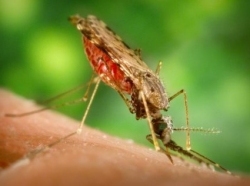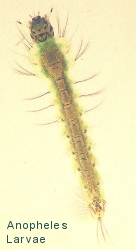|
It's no secret that I'm opposed to the widespread indiscriminate use of
synthetic pesticides. Given that, I've been asked several times how I can justify
the ban on DDT, when millions of people are dying of malaria.
It's a good question.
Unfortunately, it's the wrong question. It's wrong because
it's based on three premises:
- DDT has been banned;
- In areas where mosquitoes are endemic millions are needlessly suffering
and dying from malaria deaths that are preventable if spraying DDT is allowed; and
- DDT is a panacea that strikes down mosquitoes without fail.
All three premises are wrong.
First, DDT has not been banned in most areas where malarial illness
is endemic. In fact, even in the United States, DDT may be used under a "special use" clause
in cases where there is an outbreak of mosquito-borne disease such as malaria.
|

|
Second, in areas such as Africa, guess what? Spraying DDT is allowed.
So those millions that are dying from malaria (which is indeed happening and is indeed horrible)
aren't dying because DDT is banned. So what's the deal there? The answer is that in poorer
countries, like those in Africa, in order to use DDT (or any other chemical) for insect control
correctly, you need the infrastructure in place to actually carry out your plans. That
infrastructure simply doesn't exist in the war-torn and poverty-stricken African (and other)
areas where malaria is endemic. Additionally, spraying for insect control is only one piece of a
very complex problem when it comes to the control and elimination of malaria. All of those pieces need
to be addressed for success.
Third, the world's mosquito population has became resistant to
DDT. That means that the mosquito of today isn't the mosquito of 1950. Just like germs that
are now resistant to certain antibiotics, mosquitoes are resistant to DDT. So countries that have
used DDT have found it's no longer particularly effective at killing mosquitoes.
So what does work?
|

|
- Where possible, kill mosquitoes when they are still larvae. That is more effective than
spraying to kill adult mosquitoes. Use the least toxic method to do so, such as
vegetable-based oils added to standing water. The oil suffocates the larvae with minimal
negative effect on fish, wildlife or humans, and is cheap, biodegradable and widely
available even in poor countries. And because it works based on a mechanical function
(it suffocates the larvae), mosquitoes don't develop resistance to it.
- Support organizations that are working to get bed netting to every individual at risk, and
trying to especially help countries where poverty-ridden families can't afford to buy bed
netting for themselves. Bed netting is one of the most effective and economical solutions possible
for preventing malaria. It works.
- Treat individuals who have malaria with drugs that kill the parasite, not the older drugs
that control the symptoms. If you eliminate the parasite from humans, then a mosquito can't
bite an infected person and then transmit the parasite it sucks in with the blood to another
human. That requires drugs and the actual treatment using those drugs to get to the right
places, a daunting task but one that countries like Brazil have successfully undertaken.
- Until research provides us with insecticides that aren't toxic to anything but what
they're aimed at killing, use products that have the least collateral damage to non-target
species. Translated: it doesn't help to kill mosquitoes if you kill the birds that eat
the mosquitoes, and seriously harm (or kill) the other wildlife and humans that you're trying
to protect.
Underlying all of this, by the way, is a fourth false premise:
DDT is pretty safe. Everyone knows that Rachel Carson was a wingnut, and the
loony-left-granola-crunching-tree-huggers can't trot out a single bit of evidence
that proves DDT is a problem.
Wrong again.
I could list quite a few studies and authorities, but I think I'll let the
United States Fish
and Wildlife Service sum it up:
"The Service continued to conduct studies on, and
to voice its concern over, the effects of DDT on fish and wildlife for more than 25 years.
It was not until 1972, and then because of the potential harm to human health, that the
Environmental Protection Agency (EPA) banned the use of DDT in the United States barring
a public health or economic emergency."
And that decision was made before scientists even began
to scratch the surface on how
DDT is a strong endocrine disruptor,
with the potential to cause reproductive, behavioral, immune system and neurological problems.
So, about that ban on DDT which is causing the loss of millions of innocent
human lives?
It's a myth.
|

